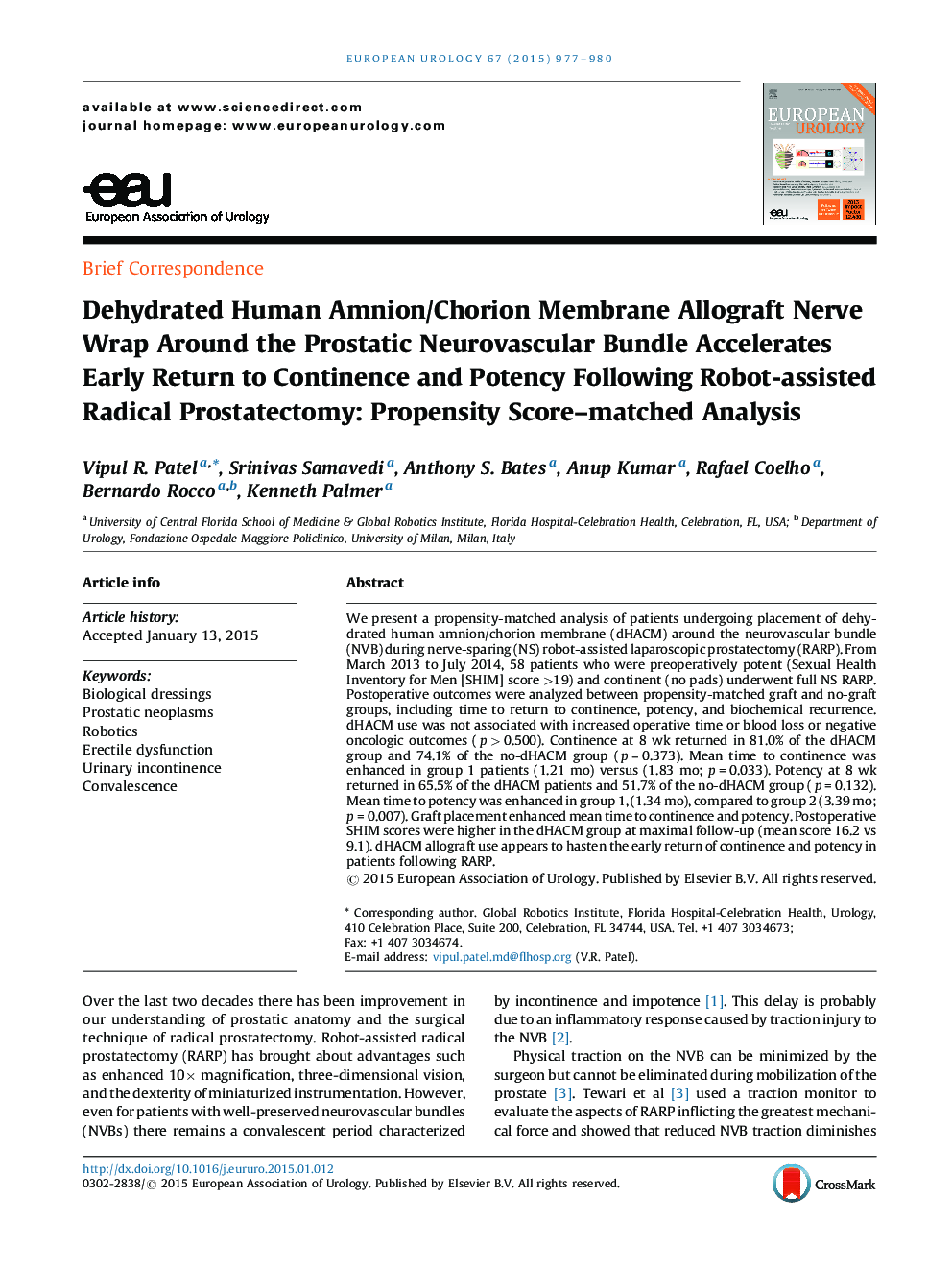| Article ID | Journal | Published Year | Pages | File Type |
|---|---|---|---|---|
| 6175135 | European Urology | 2015 | 4 Pages |
We present a propensity-matched analysis of patients undergoing placement of dehydrated human amnion/chorion membrane (dHACM) around the neurovascular bundle (NVB) during nerve-sparing (NS) robot-assisted laparoscopic prostatectomy (RARP). From March 2013 to July 2014, 58 patients who were preoperatively potent (Sexual Health Inventory for Men [SHIM] score >19) and continent (no pads) underwent full NS RARP. Postoperative outcomes were analyzed between propensity-matched graft and no-graft groups, including time to return to continence, potency, and biochemical recurrence. dHACM use was not associated with increased operative time or blood loss or negative oncologic outcomes (p > 0.500). Continence at 8 wk returned in 81.0% of the dHACM group and 74.1% of the no-dHACM group (p = 0.373). Mean time to continence was enhanced in group 1 patients (1.21 mo) versus (1.83 mo; p = 0.033). Potency at 8 wk returned in 65.5% of the dHACM patients and 51.7% of the no-dHACM group (p = 0.132). Mean time to potency was enhanced in group 1, (1.34 mo), compared to group 2 (3.39 mo; p = 0.007). Graft placement enhanced mean time to continence and potency. Postoperative SHIM scores were higher in the dHACM group at maximal follow-up (mean score 16.2 vs 9.1). dHACM allograft use appears to hasten the early return of continence and potency in patients following RARP.
